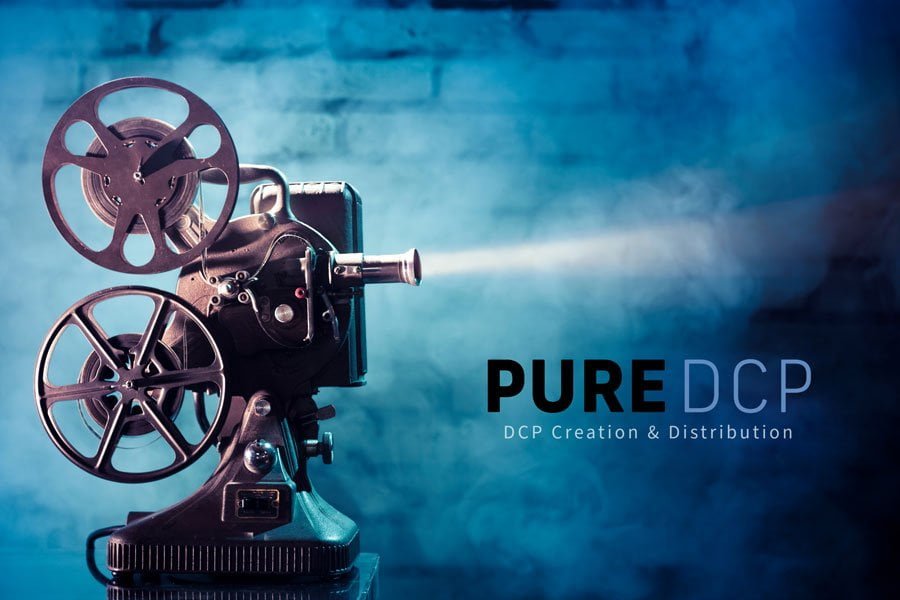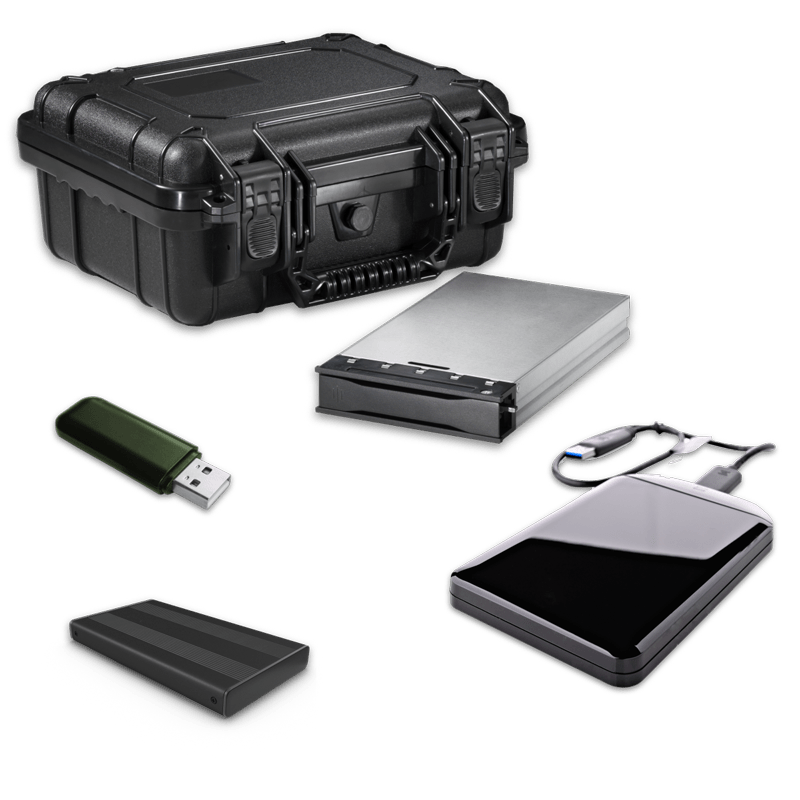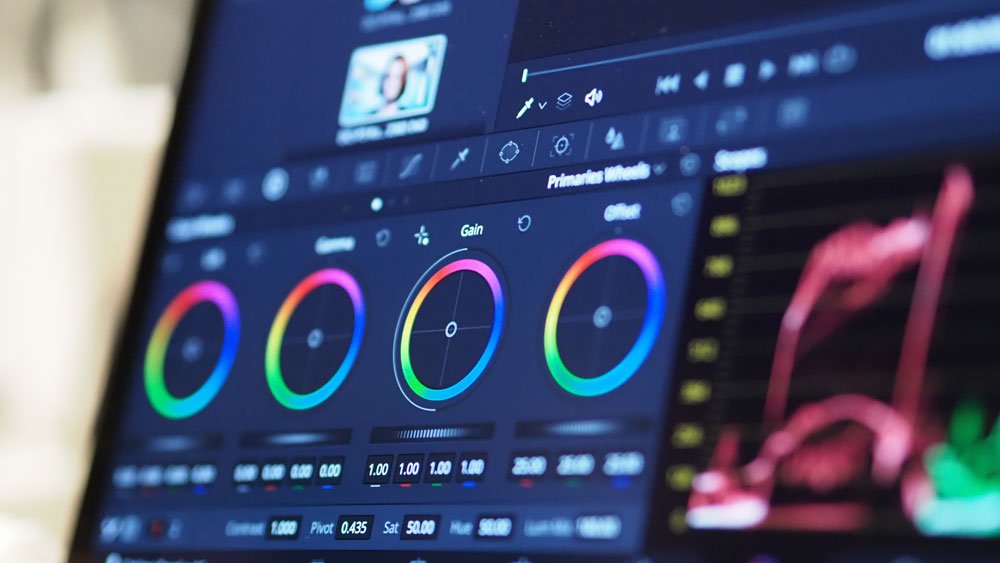Digital Cinema Package (DCP)
Creation & Distribution
Digital Cinema Package (DCP)
Creation & Distribution

Pure DCP specializes in Digital Cinema Packages (DCP) tailored to meet the exacting standards of filmmakers and production houses worldwide. With both physical and digital delivery options, our services are designed for versatility, ensuring your masterpiece is ready for festival screenings, theatrical releases, and more.
Our physical DCP delivery service gives you flexibility with multiple drive options, including CRU DX115 Hard Drives, SSDs, USB drives, and flash drives.
Send us your final video file, we’ll create your DCP and then ship it out on the drive of your choice.
You also have the option of providing your own drive to us.
Enjoy free shipping across the U.S., simplifying your distribution process.
Physical Drives | |
|---|---|
CRU Hard Drive - 1TB Shipping Case DX115DC Carrier |
$255 |
SSD Drive - 1TB |
$135 |
USB Drive - 1TB |
$85 |
Flash Drive - 512GB |
$59 |

In addition to physical drives, we offer cloud-based digital DCP delivery.
Upload your final video, we’ll create your DCP and then provide you with a secure download link from our cloud storage accessible for six months, perfect for festival submissions and multi-venue delivery.
Most DCPs are delivered digitally now, although it’s always a good idea to have a backup on a physical hard drive.
There is no charge for digital delivery and 6 month archival storage

If you need that final touch to bring everything together, complimenting your vision, our seasoned colorists and finishing artists can take you over the finish line.
From color grading to visual effects, we ensure your project looks its best.
Whether it’s a short film, commercial, or feature-length production, our experts will elevate your project to professional standards.
Call or email for a finishing services quote and let us help you achieve perfection.

We keep your digital DCP accessible in the cloud for 6 months, providing you with the flexibility to submit or deliver to other festivals or venues effortlessly.
Our service ensures your project is always available when you need it.
For those requiring longer storage periods, we offer extended archival options to suit your needs.
Check out our additional 6-month, 1-year and 5-year storage plans.

Ensure your film is ready for any submission format with our Blu-ray Authoring service, tailored specifically for filmmakers.
Whether you need a Blu-ray for festival submissions or simply to have a polished copy of your work, this service ensures your film is presented in the best possible quality.
We’ll convert your film to Blu-ray, create a simple, intuitive menu, and produce two professionally labeled Blu-ray discs.
Perfect for filmmakers who are already submitting DCPs and want a Blu-ray for additional submissions or personal use.

Take the stress out of organizing your festival lineup with our comprehensive Film Festival Preparation for Producers service. Designed specifically for festival organizers, we streamline the technical and logistical aspects of managing your selected films:
We understand the unique challenges of festival production and work closely with you to ensure every film in your lineup is properly prepared, organized, and delivered. With our expertise, you can focus on curating an exceptional festival experience while we handle the technical details.
Fee: Customized for your festival’s needs and priced by quote. Contact us today to discuss your project.
Let us simplify the technical and logistical side of your festival so you can focus on making it unforgettable!

A DCP (Digital Cinema Package) is a standardized digital file format used for storing and delivering digital cinema content to movie theaters for projection. It’s the digital equivalent of a traditional 35mm film print. DCPs contain all the audio, video, subtitle, and metadata elements necessary for the presentation of a movie in a theater.
Here are some key features of DCPs:
Overall, DCPs have become the standard format for distributing movies digitally to theaters worldwide, offering improved efficiency, consistency, and quality compared to traditional film prints.
No, “DCP” typically stands for Digital Cinema Package, which is not a video format but rather a set of digital files used to store and convey digital cinema (movie) content. A DCP includes files for video, audio, subtitles, and metadata. It’s the standard format for distributing movies to cinemas digitally, providing high-quality playback for theatrical presentations.
DCI stands for Digital Cinema Initiatives, LLC. It’s a joint venture of major motion picture studios (such as Disney, Fox, Paramount, Sony Pictures Entertainment, Universal, and Warner Bros.) created to establish and define digital cinema specifications and standards. The DCI was formed to ensure interoperability and security across digital cinema systems, including the creation of the Digital Cinema Package (DCP) format, which is used for distributing digital movies to theaters. These standards help maintain consistent quality and security in digital cinema presentations worldwide.
“Interop” is short for “interoperability,” which refers to the ability of different systems, devices, or software to work together smoothly and effectively. In the context of digital cinema, “Interop” often refers to the Interop DCP (Digital Cinema Package) format.
Interop DCP (or simply “Interop”) is one of the two main types of DCP formats used in digital cinema, alongside SMPTE DCP. Interop DCP was developed initially as a transitional format before the adoption of SMPTE DCP. It follows slightly different specifications and is primarily used in older digital cinema installations or in regions where Interop DCP is still prevalent.
In essence, Interop DCP ensures that digital cinema equipment from different manufacturers can communicate and play back content consistently, maintaining interoperability across various systems within the digital cinema ecosystem.
Ultimately, whether your film’s image needs to be cropped for the DCP will depend on factors such as the aspect ratio of your original footage, the desired aspect ratio for theatrical projection, and any specific requirements or standards for DCP creation. It’s advisable to work closely with a post-production facility experienced in DCP creation to ensure that your film is properly formatted for digital cinema exhibition while preserving your creative vision.
KDM stands for Key Delivery Message. In the context of digital cinema, a KDM is a digital encryption key used to unlock encrypted content within a Digital Cinema Package (DCP).
Here’s how it works:
In summary, a KDM is a critical component in the secure delivery and playback of encrypted digital cinema content, ensuring that only authorized theaters can access and exhibit the movies they have been licensed to show.
A Distribution Key Delivery Message (DKDM) is a type of Key Delivery Message (KDM) specifically used in the digital cinema distribution process.
In the context of digital cinema, a KDM is a digital encryption key used to unlock encrypted content within a Digital Cinema Package (DCP) for playback in a theater. The KDM ensures that only authorized cinemas or playback devices can access and play the content, and it often contains information about which screens or devices are authorized to play the content and for how long.
A DKDM is essentially a master key that authorizes the creation of KDMs for a particular DCP. It is typically generated by the content distributor (such as a film studio or distribution company) and sent securely to the facility responsible for generating KDMs, such as a digital cinema mastering facility or a trusted third-party service provider.
Once the DKDM is received, the facility can use it to generate individual KDMs for each theater or playback device where the DCP will be shown. These individual KDMs are then sent to the respective theaters or devices, allowing them to decrypt and play the content securely.
In summary, a Distribution Key Delivery Message (DKDM) is a master key used to authorize the creation of individual Key Delivery Messages (KDMs) for decrypting and playing encrypted digital cinema content in theaters or playback devices.
SMPTE stands for the Society of Motion Picture and Television Engineers. It is a professional organization that develops and publishes technical standards for the motion imaging industry, encompassing both film and television.
SMPTE standards cover a wide range of topics, including video compression, digital cinema, audio synchronization, color representation, and file formats, among others. These standards are crucial for ensuring interoperability, consistency, and quality across various aspects of the motion imaging workflow, from content creation to distribution and playback.
The organization, founded in 1916, is composed of engineers, technologists, researchers, and professionals from the film, television, and related industries. SMPTE standards are widely adopted internationally and play a significant role in shaping the evolution of motion imaging technologies.
A DCDM (Digital Cinema Distribution Master) is a high-quality, uncompressed digital version of a movie created specifically for distribution to theaters in the digital cinema ecosystem. It serves as the source material for generating the Digital Cinema Package (DCP), which is the standardized format used for distributing movies to cinemas digitally.
A DCDM typically contains the film’s audio and video elements in their highest quality, often in formats like JPEG 2000 for video and PCM (Pulse-Code Modulation) for audio. Unlike the DCP, which may undergo compression and other modifications for distribution, the DCDM retains the original, pristine quality of the movie.
The DCDM is used as the basis for creating the various versions and formats required for distribution, ensuring consistency and preserving the integrity of the content throughout the digital cinema distribution process. It serves as a master copy from which DCPs are created for exhibition in theaters.
In the context of Digital Cinema Packages (DCPs), the X’Y’Z’ color space is significant primarily because it is one of the color spaces commonly used for encoding the color information of the digital cinema content.
When a movie is mastered for digital cinema distribution, it undergoes a process where its color information is converted into a digital format suitable for projection in theaters. During this process, the color space used for encoding the movie’s color information is often X’Y’Z’.
Here’s how X’Y’Z’ relates to DCPs:
Overall, the X’Y’Z’ color space plays a vital role in the color encoding and playback of digital cinema content distributed via DCPs, contributing to accurate and consistent color reproduction in theaters.